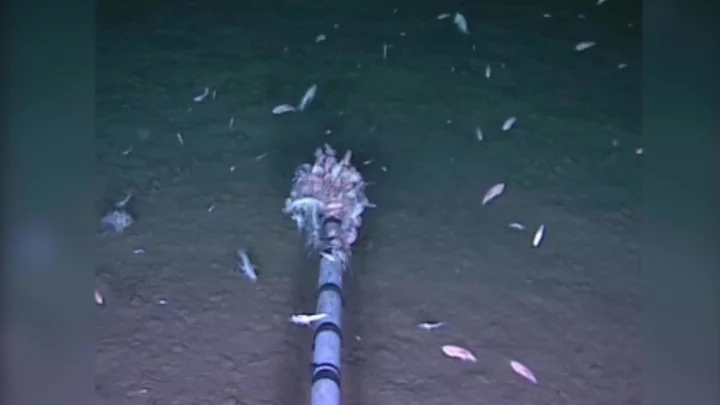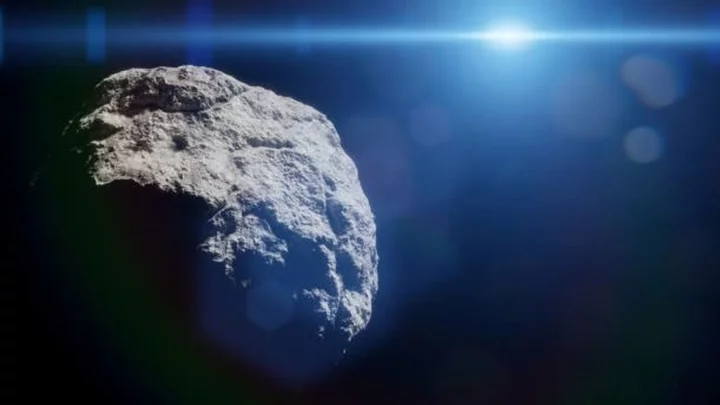
Man drives off bridge ‘following Google Maps’
A man who died after driving his car off a collapsed bridge was following Google Maps directions, according to a lawsuit. The family of Philip Paxson, who drowned on 30 September last year while driving home from his daughter’s ninth birthday party, is suing the technology giant for negligence, claiming that it had been informed of the collapse but failed to update its navigation system. Paxson, a medical device salesman and father of two, drove his Jeep Gladiator off the derelict bridge into Snow Creek in Hickory, North Carolina. He was driving through an unfamiliar neighbourhood when Google Maps directed him to cross a bridge that had collapsed nine years prior and was never repaired, a lawsuit filed Tuesday in Wake County Superior Court alleges. “Our girls ask how and why their daddy died, and I’m at a loss for words they can understand because, as an adult, I still can’t understand how those responsible for the GPS directions and the bridge could have acted with so little regard for human life," said his wife, Alicia Paxson. State troopers who found Paxson's body in his overturned and partially submerged truck had said there were no barriers or warning signs along the washed-out roadway. He had driven off an unguarded edge and crashed about six metres (20 feet) below, according to the lawsuit. The North Carolina State Patrol had said the bridge was not maintained by local or state officials, and the original developer’s company had dissolved. The lawsuit names several private property management companies that it claims are responsible for the bridge and the adjoining land. Multiple people had notified Google Maps about the collapse in the years leading up to Paxson's death and had urged the company to update its route information, according to the lawsuit. The Tuesday court filing includes email records from another Hickory resident who had used the map's “suggest and edit” feature in September 2020 to alert the company that it was directing drivers over the collapsed bridge. A November 2020 email confirmation from Google confirms the company received her report and was reviewing the suggested change, but the lawsuit claims Google took no further actions. A spokesperson for Google, which is headquartered in California but maintains a registered office in Raleigh, said: “We have the deepest sympathies for the Paxson family. Our goal is to provide accurate routing information in Maps and we are reviewing this lawsuit.” In a post on Facebook, Paxson’s mother-in-law wrote that it was dark and rainy on the night that he died. “He will be greatly missed by his family and friends,” she wrote. “It was a totally preventable accident. We are grieving his death.” Additional reporting from agencies Read More Google Maps prank sees school renamed 'Hell on Earth' Google’s powerful ‘Bard’ AI can now get into your email BBC reviews Russell Brand’s time at corporation as YouTube demonetises content Google announces huge breakthrough step in finding genes that cause disease
2023-09-21 21:25

Nintendo Download: A Night Market To Remember
REDMOND, Wash.--(BUSINESS WIRE)--Sep 21, 2023--
2023-09-21 21:23

Advent Technologies Unveils its Serene Power Systems, Providing Clean Electric Power to the Marine Industry
BOSTON--(BUSINESS WIRE)--Sep 21, 2023--
2023-09-21 21:20

Boomi Launches World Tour, Bringing Together Visionary Leaders and Industry Experts to Prepare Businesses for the AI Revolution
CHESTERBROOK, Pa.--(BUSINESS WIRE)--Sep 21, 2023--
2023-09-21 21:19

Cisco buying cybersecurity firm Splunk for $28 billion, bolstering defenses as use of AI widens
Silicon Valley tech giant Cisco is buying cybersecurity firm Splunk in a $28 billion deal as it looks to keep up with potential security threats that could be brought about by the increasing use of artificial intelligence
2023-09-21 20:54

Scientists have found a novel virus at the bottom of the ocean
Scientists have discovered a new virus in the Pacific that is thought to be the deepest ever found in Earth’s oceans. The so-called bacteriophage virus infects and replicates inside bacteria, and was found in the Mariana Trench, which is the Pacific’s deepest point. Bacteriophages are among the world’s most abundant life forms, and are important for regulating population sizes in the oceans and releasing nutrients. This one, the catchily named vB_HmeY_H4907, was picked up at 8,900 metres below sea level. That is still some way off the 11,000 metre floor of the trench. Min Wang, a marine virologist from the Ocean University of China, said: “To our best knowledge, this is the deepest known isolated phage in the global ocean.” “Wherever there’s life, you can bet there are regulators at work. Viruses, in this case.” Scientists think this virus is likely to be distributed widely in the world’s oceans, despite the fact it has only been discovered. It has a similar structure to its host bacteria group halomonas. These are usually found in sediments and geyser-like openings on the seafloor. They also think the virus is lysogenic, which means it infects the host but does not kill it. Dr Wang said the discovery could inform further research about how viruses survive in the world’s harshest environments. “Extreme environments offer optimal prospects for unearthing novel viruses,” he added. The virus was found in the so-called hadal zone, which the study’s authors said is “the planet’s least explored and most mysterious environment, and it is the deepest habitat for life on Earth’s surface”. The area is named after Hades, the Greek god of the underworld. Researchers wrote in the study: “These findings expand our understanding of the phylogenetic diversity and genomic features of hadal lysogenic phages, provide essential information for further studies of phage-host interactions and evolution, and may reveal new insights into the lysogenic lifestyles of viruses inhabiting the hadal ocean.” The findings were published in the journal Microbiology Spectrum. Sign up to our free Indy100 weekly newsletter Have your say in our news democracy. Click the upvote icon at the top of the page to help raise this article through the indy100 rankings.
2023-09-21 20:48

Scientists issue warning about asteroid heading to Earth with force of 24 atomic bombs
Scientists are on alert after NASA confirmed there is a chance an asteroid the size of the Empire State Building could come smashing into Earth. The asteroid is named Bennu after the ancient Egyptian bird god and has been on the space agency’s radar for a long time as they try to prevent it from coming crashing into our planet. Bennu has been categorised as one of the two “most hazardous known asteroids” and, despite the chance of impact standing at 1-in-2,700, it could strike the Earth with the force of 24 times that of the largest nuclear bomb – 1,200 megatons of energy. The carbon-based asteroid is approximately 510 metres wide and experts predict that it will come closest to hitting Earth on September 24, 2182. While the asteroid is quite sizeable, it is not quite as sizeable as the six-mile-wide asteroid which almost completely wiped out the dinosaurs. But, NASA warns that Bennu “could cause continental devastation if it became an Earth impactor”. A space mission launched using NASA’s OSIRIS-REx spacecraft has successfully taken a sample from Bennu in order for scientists to better understand the potentially dangerous asteroid. On Sunday (24 September) a capsule of the material will be dropped by OSIRIS-REx and returned to Earth where it will be retrieved and the matter inside studied. Davide Farnocchia of NASA's Jet Propulsion Laboratory told the Science Journal: “We improved our knowledge of Bennu's trajectory by a factor of 20.” As scientists work to investigate how much of a risk it could cause, Farnocchia added: “In 2135, we'll know for sure.” Sign up to our free Indy100 weekly newsletter Have your say in our news democracy. Click the upvote icon at the top of the page to help raise this article through the indy100 rankings.
2023-09-21 20:28

Lack of Cloud Management Continues to Drive Significant Waste of IT Resources: Aptum Study
TORONTO--(BUSINESS WIRE)--Sep 21, 2023--
2023-09-21 20:28

IOTech Partners with Advantech to Speed Adoption of Advanced Technologies in Manufacturing and other Industrial Sectors
SAN FRANCISCO--(BUSINESS WIRE)--Sep 21, 2023--
2023-09-21 20:19

Quantum-Si Appoints Biotech Executive and Entrepreneur, Amir Jafri, to its Board of Directors
BRANFORD, Conn.--(BUSINESS WIRE)--Sep 21, 2023--
2023-09-21 20:17

Solar panel breakthrough could supercharge ‘miracle material’ production
Scientists have made a major breakthrough with a new type of solar panel that they claim could supercharge the transition to renewable energy sources. A team from the University of Surrey discovered that a nanoscale “ink” coating could improve stability enough to make next-generation perovskite solar cells suitable for mass production. Perovskite is cheaper and lighter than conventional silicon-based cells, as well as far more efficient, however the emerging technology currently suffers from a drop in efficiency and energy output during the manufacturing process. “Performance limits of traditional solar cells are why researchers are switching to examining perovskite as the next-generation solar technology, especially as applications both terrestrial and in space are rapidly growing,” said Dr Imalka Jayawardena from the University of Surrey’s Advanced Technology Institute (ATI). “Our key development in solar panel technology shows a cost-effective approach to scaling of perovskite solar cells, a development which could help countries around the world to reach their net zero targets faster.” The breakthrough was made when the researchers identified an aluminium oxide that minimises the drop in efficiency during the conditioning of perovskite solar cells. Perovskite has been hailed as a “miracle material” for its potential to transform an array of industries, from ultra high-speed communications to renewable energy. Recent advances have seen it used to create self-healing solar panels that can recover 100 per cent of their efficiency after being damaged by radiation in space, as well as break new efficiency records when combined with silicon to form tandem cells. If the cheap-to-produce perovskite cells can be manufactured at scale while retaining their durability and reliability, then the cost of solar panels would plummet. “Solar and wind energy costs are rapidly decreasing based on technology improvements, to the level where worldwide over 80 per cent of all new additional power generation capacity is based on renewables,” said Ravi Silva, from the ATI, University of Surrey. “The levelized cost of solar electricity is now cheaper than most other power-generating sources. With the maturing of perovskite solar modules, the levelized cost of electricity will significantly decrease further, and that is why this is such an exciting area to work.” The research was detailed in a study, titled ‘Modification of Hydrophobic Self-Assembled Monolayers with Nanoparticles for Improved Wettability and Enhanced Carrier Lifetimes Over Large Areas in Perovskite Solar Cells’, published in the peer-reviewed scientific journal Solar PRL. Read More Hundreds of years after it was discovered, one material is about to change the world ‘Miracle material’ smashes solar panel efficiency threshold Scientists invent solar panels that work in a snow blizzard September Supermoon: When is it and how to view it? Amazon Alexa is getting the same brain as ChatGPT
2023-09-21 19:27

WiSA Technologies Announces 3-Channel Output Support for its WiSA E Receiver Module
BEAVERTON, Ore.--(BUSINESS WIRE)--Sep 21, 2023--
2023-09-21 19:27
You Might Like...

‘This will pass’: Reddit boss responds to major chaos at site

PayRetailers Lands in Bulgaria, Expanding Operations and Establishing Development Hub in Sofia

ServiceNow to Acquire Artificial Intelligence Powered Platform G2K to Transform Retail and Beyond

ChatGPT creator launches bitcoin rival that scans people’s eyeballs

OneRail Expands Leadership Team and Opens Data Science and AI Department

Mouser Electronics Awarded Third Consecutive Year for Excellence in E-Commerce Distribution by Omron

Adtran launches new FSP 3000 OLS to unlock the coherent optical edge

Shapeways Announces Key Investments in Software Offering
